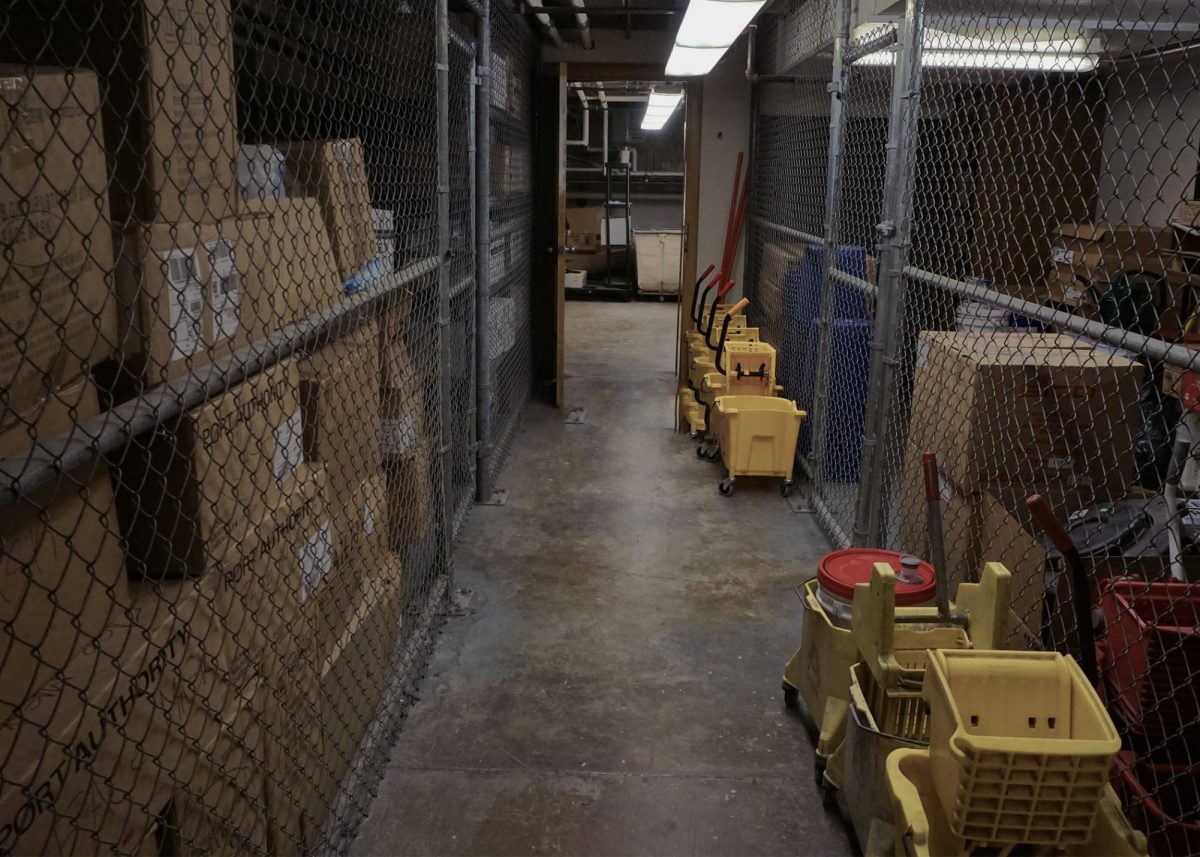Highland High School is old school. Not the cool old school, but the crippled grandma with dementia old school. Highland hasn’t had a major remodel since the 1990s, according to Principal Jeremy Chatterton. That’s roughly 30 years, or roughly the same distance today is from 2050. This means that it is rather outdated compared to other schools which have recently been remodeled.
Highland originally was built over an old prison, although the prison itself was further south into Sugarhouse Park. The district actually chose Highland’s school colors, black and white, because those were the colors of prison jumpsuits. Highland opened in 1956, and there are still elements visible from that ancient date.
Despite the need, the SLCSD Board of Education decided not to put out a bond initiative on the ballot this November. According to Alan Kearsley, the District’s Business Administrator, it wasn’t put up on the ballot because they didn’t believe that with the time they had between when the feasibility study was presented to them in February and the election in November to run a successful bond campaign. A bond initiative means that the Board is asking local taxpayers to pay more taxes so that the District is able to afford the cost of the new schools.
“In order to put forth a hopefully successful bond initiative, a school district needs at least 12 months of planning prior to the bond election,” Kearsley said.
During a tour for The Highland Rambler, Chatterton pointed out gaps in the basement, leaky pipes, windowless rooms, and other elements that need attention in order to make the school an optimal place for students to learn and educators to teach.
Highland is built mostly of old brick, and there is still a distinct lack of windows, especially in the basement. This can damper education, according to the University College London. Highland also has an old heating system which uses an intricate system of massive fans blowing air through the school. Using huge boilers that run off steam and what are called “chillers,” Highland keeps the climate somewhat bearable.
The problem, according to Chatterton, is that the heating and cooling will only kick on when the outside air reaches a certain temperature. Coupled with the fact that the boilers and the chillers can’t run at the same time, and it leads to Highland’s temperature varying from class to class as students walk from the freezer section at Costco to a furnace. This obviously doesn’t make an amazing learning environment, something the administration is hoping to fix if Highland gets rebuilt.
One of the biggest problems is how exposed all the inner workings are.
Highland’s basement is a maze of exposed pipes and grime. It’s incredibly difficult to keep a place clean when sewage lines are running through classrooms and are prone to leak. Ask any student, and they’ve most likely seen pipes in their classrooms or in the halls. Pipes often leak; for example, the football locker room downstairs usually is flooded by human waste at least once a season.
This is a huge blow to Chatterton’s wish of a school students can pride themselves on. One of the biggest culprits is the wrestling room, where the main sewage line runs right through it, an ominous black pipe over the dimly lit mats.
“We want our students to feel a pride of coming into a really nice space.” Chatterton said. “And I think we do; we’ve done a really good job of trying to make Highland a nice space now. But it is very much kind of a combination of some very old spaces and some very new and nice spaces. So that creates a challenge for us. We’re trying to, you know, I mean, we want students to feel pride for entering the building.”
Many of Highland’s systems break down, which can cause major problems.
During the afternoon of August 31st, the alarms sounded on both pumps that move huge amounts of waste from the restrooms down by the stadium up to the main sewage line and out to 2100 South. Chatterton was forced to shut both pumps down temporarily, along with all the restrooms in the area.
“Issues like that just really cause frustration,” Chatterton said.
This was a huge issue. Another big one that happened last year was one of the pipes that holds the steam that is blown throughout the school by huge fans leaked, causing the cavernous fan room down in A Hall to be filled with a thick cloud of steam.
There are plenty of areas around Highland that need to be rebuilt and updated. Highland is surrounded by schools that seem more like a college campus with state-of-the-art facilities and amazing programs. Meanwhile, Highland still uses steam to heat the building. No matter how hard the administration tries, things like leaky pipes, ancient rooms, and faulty systems can’t be fixed by cosmetics alone.
No matter the view, it is no wonder that district officials are hoping to rebuild the school.
Such a herculean task is apt to cost plenty of money, which will fall on the taxpayers. Especially since the district wants to rebuild both Highland and West, while also making improvements to East.
“The school board is going to ask to bond the cost of the new schools.” Chatterton said. “The challenge we’re looking at is after the feasibility study conducted last year, to rebuild the new schools right now. So, you’re looking at $700 million for Highland and West. And if you want to do some upgrades to East, round it off and say a billion dollars. So, is that something that the taxpayers are willing to do?”
That is a question hopefully for voters next year if the Board decides to put a bond initiative on the ballot. What happens then determines the fate of Highland and its students; if they’ll be consigned to an old school on old prison grounds, or if Highland will join the ranks of the many new, modern schools in Salt Lake City. It also determines if Chatterton’s dream of a clean, beautiful school that students pride themselves on will come true.
































